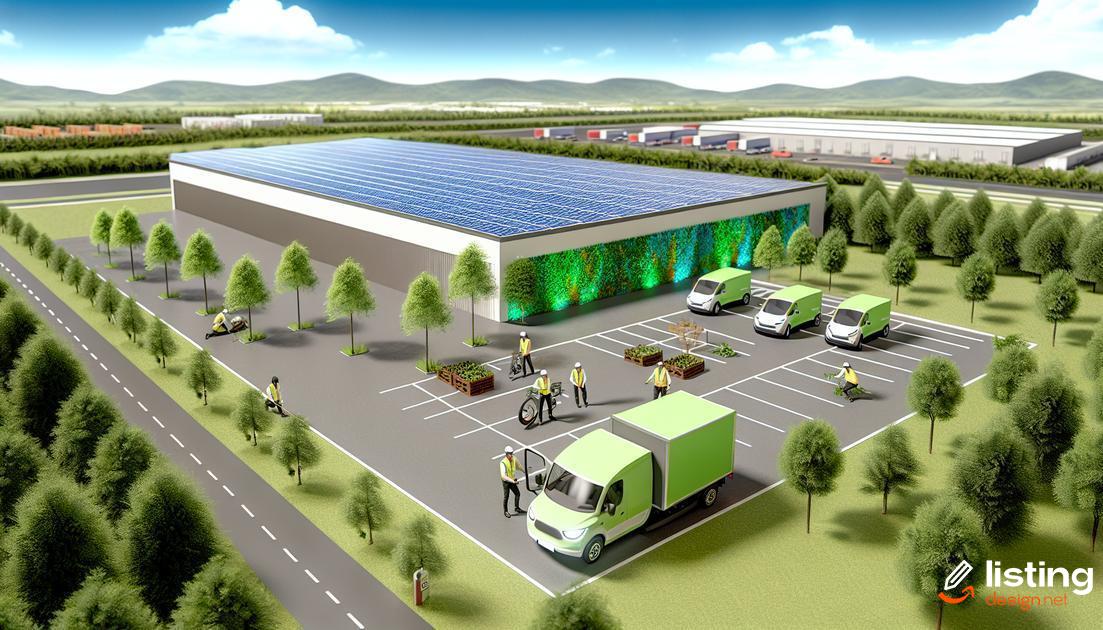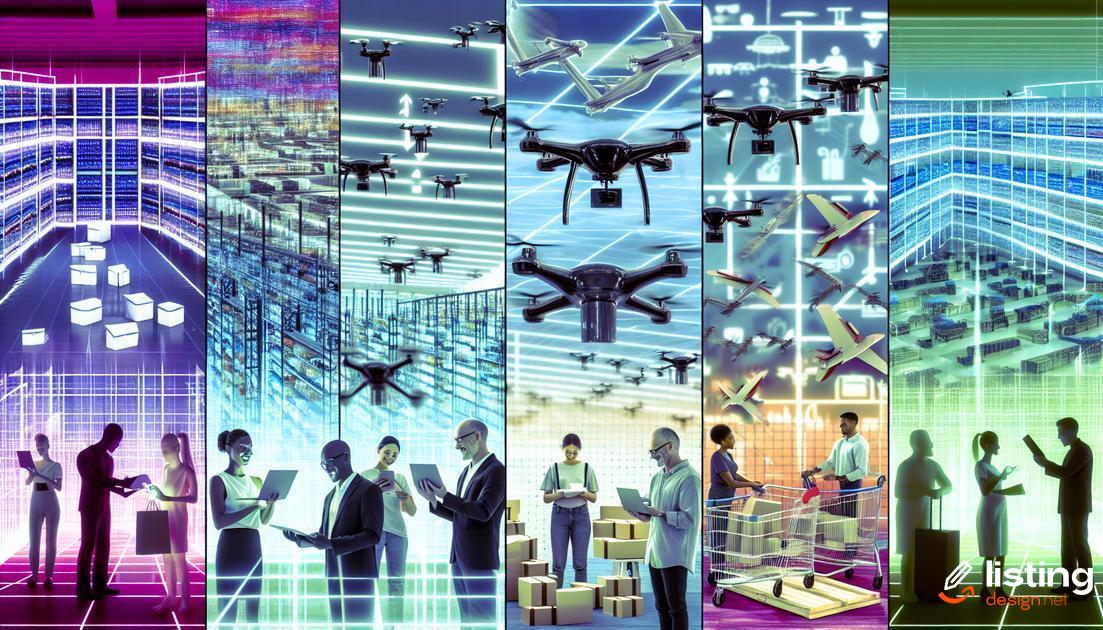The future of Amazon e-commerce is set to revolutionize how we shop online. With advancements in artificial intelligence, sustainability efforts, and new technologies, Amazon is poised to lead the way. In this article, we will delve into key trends, innovations, and changes that will shape the future of this e-commerce giant. Read on to discover what the next decade holds for Amazon and its customers.
Table of Contents
The Rise of AI and Machine Learning in E-commerce
The rise of artificial intelligence (AI) and machine learning in e-commerce has transformed how businesses operate and interact with customers. AI algorithms analyze massive amounts of data to provide insightful analytics, helping retailers understand consumer behavior patterns and predict future trends. This, in turn, allows for more customized and efficient marketing strategies.
Machine learning, a subset of AI, enables systems to learn and improve from experience without being explicitly programmed. By utilizing machine learning, Amazon can offer personalized shopping experiences to each user through product recommendations and tailored advertisements. These technologies also optimize inventory management, ensuring that popular items are readily available, thereby reducing the risk of stockouts and overstock.
Moreover, AI-powered chatbots and virtual assistants enhance customer service by providing instant responses and support, significantly improving user satisfaction. These benefits create a seamless and engaging shopping experience that is crucial in the competitive e-commerce landscape..
Fraud Detection and Security
Another crucial aspect of AI in e-commerce is fraud detection and security. Advanced machine learning models can identify unusual patterns and potential fraud activities in real-time, providing a secure shopping environment. This ensures that both vendors and customers can trust the platform with their transactions.
Sustainability Initiatives by Amazon

Amazon has been at the forefront of implementing sustainability initiatives to reduce its environmental impact. One of the key strategies includes the deployment of renewable energy sources. Amazon is investing heavily in wind and solar farms to power its operations, aiming to achieve 100% renewable energy by 2025.
The company has also introduced innovative packaging solutions to minimize waste. By developing frustration-free packaging, Amazon reduces the amount of plastic and unnecessary materials, enhancing recyclability.
Amazon’s Climate Pledge is another significant move towards sustainability. This commitment includes achieving net-zero carbon emissions by 2040. The initiative involves measures like using electric delivery vehicles and optimizing route planning to decrease carbon footprints.
Additionally, Amazon is focusing on the circular economy through its efforts in product recycling. The Amazon Second Chance program educates customers on how to recycle their devices and offers trade-in programs to extend product lifecycle.
In the realm of logistics, the company is incorporating advanced technologies to improve energy efficiency. They are exploring the use of autonomous drones and are designing eco-friendly warehouses equipped with low-energy systems.
Impact of Augmented Reality on Shopping Experience
Augmented Reality (AR) is transforming the way consumers shop online. By integrating AR into the shopping experience, Amazon can offer a more interactive and engaging way to view products. Shoppers can use AR to visualize items in their real-world environment, helping them make more informed purchasing decisions. For instance, customers can see how furniture looks in their home before buying it or try on clothes virtually to check fit and style.
AR also allows for detailed product previews. Customers can inspect the texture, color, and size of products as if they were holding them. This immersive experience not only increases customer satisfaction but also reduces the likelihood of returns. Additionally, AR can provide step-by-step assembly instructions, making the post-purchase process smoother and more satisfying.
By leveraging AR, Amazon can enhance the shopping journey, offering an unparalleled level of detail and personalization. This technology promises to be a game-changer in e-commerce, setting new standards for how customers interact with online retailers.
Expansion of Amazon’s Global Market Reach

Amazon’s strategy to dominate the global market is a testament to its ambition and execution. Their penetration in emerging markets such as India and Southeast Asia has been remarkable, spearheaded by localized approaches that cater to the unique demands of these regions. Amazon Prime has also played a pivotal role, offering faster delivery and exclusive services that attract a loyal customer base.
Furthermore, Amazon’s investment in infrastructure in international markets is evident through their expansive warehouse networks and strategic partnerships. This ensures a seamless supply chain and efficient delivery system, which is crucial for maintaining a competitive edge globally. By continuously expanding their product assortment and utilizing data analytics to understand consumer behavior, Amazon is setting the stage for future growth in a variety of international landscapes.
Moreover, the acquisition of local e-commerce platforms helps in overcoming regulatory challenges and better understanding the local market nuances. Amazon’s aggressive pricing strategies, coupled with promotional offers, are designed to lower the entry barrier for new customers and increase market share swiftly.
In addition, Amazon’s investment in digital payment solutions and fintech in various regions simplifies transactions, making it easier for customers to purchase online. This supports their vision of creating a more inclusive e-commerce environment worldwide.
The Role of Blockchain in Supply Chain Management
Blockchain technology has the potential to revolutionize supply chain management by enhancing transparency, traceability, and efficiency. Blockchain provides a decentralized and immutable ledger that records every transaction, making it easier to track the movement of goods from manufacturers to consumers. This can significantly reduce fraud and errors, ensuring the authenticity of products.
In addition, blockchain can help with inventory management. By providing real-time updates, companies can maintain optimal stock levels, reducing both shortages and overstock situations. Smart contracts within the blockchain can automatically trigger actions based on predefined conditions, such as payments upon delivery, which streamline operations and reduce the need for intermediaries.
Another critical aspect is improving vendor relationships. Blockchain’s transparent nature allows all parties to access the same information, reducing disputes and increasing trust. This is particularly useful for auditing purposes, as every transaction is permanently recorded and easily traceable.
Moreover, blockchain enhances data security in the supply chain. The decentralized structure ensures that no single entity controls the data, reducing the risk of hacking and data breaches. As Amazon continues to grow its global reach, employing blockchain in its supply chain management could further cement its leadership in e-commerce by promoting efficiency and trustworthiness.
Amazon’s Advances in Customer Personalization

Amazon’s Advances in Customer Personalization amplify the online shopping experience by tailoring it to individual preferences. Through advanced algorithms and machine learning techniques, Amazon analyzes customer data to provide product recommendations that are both relevant and timely. Beyond mere suggestions, the platform customizes the entire shopping journey.
Personalized homepages greet users with items they are likely to purchase based on past behaviors. Amazon’s use of predictive analytics means that inventory can be managed more efficiently, predicting demand and ensuring popular items are always in stock. Additionally, features like order updates and delivery notifications are tailored to each user’s preferences, providing a seamless experience from browsing to delivery.
Furthermore, Amazon integrates voice-assistants like Alexa into the personalization strategy. Alexa learns users’ habits and provides personalized recommendations and reminders, enhancing engagement. The commitment to personalization extends into Amazon Prime services, where customized deals and early access to promotions are part of the membership benefits.
Innovations in Delivery and Logistics
Amazon is continuously pushing the envelope when it comes to innovative delivery methods. One of the most anticipated advancements is the use of drone delivery. These autonomous aerial vehicles aim to reduce delivery times to mere minutes instead of hours, making the delivery process more efficient and timely.
Another groundbreaking innovation is the implementation of autonomous vehicles. Amazon has been investing heavily in driverless trucks and vans, which are expected to revolutionize long-haul delivery systems. By utilizing these vehicles, the company aims to minimize human error and increase operational efficiency.
Amazon is also optimizing its warehouse robotics. The company uses advanced robotics to streamline the sorting, packing, and shipping processes within its fulfillment centers. These robots work alongside human employees, enhancing productivity and accuracy.
The concept of hyperlocal fulfillment centers is another strategy being employed. By setting up small warehouses closer to urban areas, Amazon ensures that popular items are always within quick reach of their customers, thereby reducing delivery times drastically.
Moreover, Amazon’s smart lockers and pick-up points are designed to offer more flexibility and convenience to customers. These solutions provide secure, contactless options for retrieving packages, contributing to a better overall shopping experience.
The Future of Amazon Web Services (AWS) in E-commerce

With an ever-evolving digital landscape, Amazon Web Services (AWS) continues to be a pivotal force in revolutionizing e-commerce. Businesses rely heavily on AWS for its robust infrastructure and vast array of services that support scalable online operations. As e-commerce grows,
machine learning and analytics
provided by AWS will enhance personalized shopping experiences, helping companies deliver tailored recommendations and improve customer satisfaction.
Advanced analytics have already begun transforming how businesses strategize and respond to consumer behaviors. Real-time data processing helps companies manage inventory efficiently and predict market demands with greater accuracy. Furthermore, cloud computing capabilities of AWS enable retailers to offer seamless and reliable online services, even during peak traffic.
Security remains a top priority for e-commerce platforms, and AWS provides comprehensive security measures to protect sensitive customer data.
Robust encryption and AI-driven threat detection
ensure that both consumers and businesses can trust the integrity of transactions made online. Additionally, AWS supports innovative payment solutions through secure gateways, adding another layer of convenience for consumers.
Another significant aspect is AWS’s role in enabling businesses of all sizes to scale globally. The vast network of AWS data centers ensures low latency and optimal performance for users around the world, making it easier for companies to expand their reach without compromising service quality. Amazon’s continuous investment in AWS infrastructure highlights its commitment to supporting future e-commerce trends and technological advancements.
Overall, the future of AWS in e-commerce is promising, offering cutting-edge solutions that drive operational efficiency, enhance customer experiences, and support the dynamic needs of an increasingly digital world.


